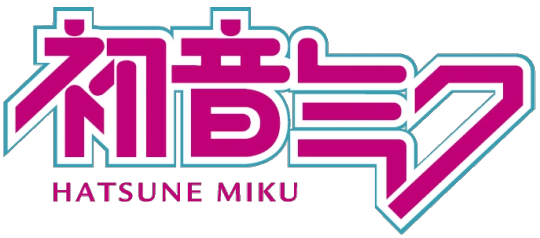#Piapro Studio NT
Explore tagged Tumblr posts
Text
'SNOW MIKU 2025' main visual and theme song information!

Main Visual by tokki :

The Theme Song will be "クリスタルスノウ" (Crystal Snow) by Aqu3ra. The full song will release at a later date. Preview Video below:
youtube
53 notes
·
View notes
Photo





徳川カップヌードル禁止令 / 草薙寧々 & ネネロボ × ミクダヨー & 鏡音レン & KAITO
#eyestrain#flashing#the tokugawa ban on cup noodles#mitchie m#hatsune miku#mikudayo#nene robo#nene kusanagi#kaito#kagamine len#kagamine rin#megurine luka#meiko#project sekai#scooter films#morii kenshiro#kinutani so shi#nagano shinpei#natsuhashi mirai#moriya saki#shinomiya you#tasuku oozu#aoki yasuhiro#uchiumi hiroshi#vocaloid#japanese vocaloid#gif#piapro studio nt
17 notes
·
View notes
Text
Crypton: “We have a BIG voicebank announcement to make for Miku’s birthday in August!”
Crypton in August: “We made Piapro Studio NT slightly faster. That’s it, that’s all we did. We didn’t even like, improve the sound quality or anything. :)”
19 notes
·
View notes
Text
My rendition of Sakura Miku NT
I might seem obsessed with Miku's NT design, but I am.
This was my last Easy Paint Tool SAI drawing before I transitioned into Krita. So really old, but still cute. Also, background.

#sakura miku#miku nt#hatsune miku#hatsune miku nt#cryptonloids#piapro studio#miku#vocaloid#derivative#pink#long hair#sakura#cherry blossom#fanart#fanmade#art#artists on tumblr#illustration#my art
24 notes
·
View notes
Text
Crypton Future Media Announces the Piapro Characters Super Pack and Hatsune Miku V6 AI!
In high anticipation and excitement, Crypton Future Media has revealed their new products for their new releases this year! 3 major products have been made including a major update for Hatsune Miku NT, a Super Pack containing remastered V4 banks for all 6 Piapro Characters, and the biggest the announcement this year, Hatsune Miku’s return to VOCALOID with Hatsune Miku V6 AI. Piapro Characters…
26 notes
·
View notes
Text
youtube
Today's featured song is: "Selfish Princess" by Fujiwo feat. Hatsune Miku! (cw: violence/murder, blood, cannibalism)
#vocaloid#vocaloid songs#vocaloid song of the day#song of the day#selfish princess#wagamama hime#fujiwo#fujiwo vocaloid#reach mix#kashiwa#kashiwa animation#hatsune miku#hatsune miku nt#piapro studio#cw violence#cw murder#cw blood#cw cannibalism#Youtube
6 notes
·
View notes
Text
IM DESTROYING BURNOUT WITH A BAT!!!
youtube
#annt's covers#vocaloid#synthv#piapro studio#hatsune miku#miku nt#mai synthv#mai#tsumiki#cerca/esoterica#Youtube
2 notes
·
View notes
Note
I'm going to cry happy tears they drew my request EEEEEEEEEEEEE
hrmm idk if I asked this before ahh
BUT PLEASE PLEASE A MIKU BUT IN HER NT/PIAPRO DESIGN BECAUSE LITERALLY NO. ONE. DRAWS HER THAT WAY. PLEASE PLE

i’ve drawn nt miku a few times but you’re right, the design is super underrated,,
1K notes
·
View notes
Note
Is the word "Vocaloid" ever mentioned in the game or is "Virtual Singer" a way of replacing it? Is the first one copyrighted and they can't use it for some reason?
the game is a techdemo for crypton's NT voicebanks, which are for use with their own piapro studio instead of yamaha's vocaloid engine. that's why the word vocaloid is never used (and why the tuning on comms/covers sounds. not great a lot of the time)
50 notes
·
View notes
Text
OKAY, so computer update.
I just got it back. (First time I got hardware sent back after sending it in I'll be damned.) At the moment everything seems to be in order but I just don't know how stable it actually is right now. Like, right now it's reading both SSD drives as separate drives (instead of only one of them, or the shitty way it was set up before as one 4TB drive) but considering how before it did read them as two drives, after turning it off and on again, it would then only read one. I did turn it off and on again now and it's still reading both of them but if that's gonna last I don't know.
If it's still working tomorrow I think I'll start reinstalling some of my VOCALOIDs, but as a trial. I might install CeVIO, VoiSona, Piapro Studio NT, and FL Studio since those licenses either carryover easily (CeVIO can easily move authorization every 24 hours and the rest are tied to accounts. Would be better if there was no DRM at all though.) but aside from those last four, I'm not going to activate anyone to be safe.
My ask box will still remain closed for the time being but I can actually talk to people now. I'm not going to open it untill I'm sure my computer's in working order.
7 notes
·
View notes
Note
(ties Testy up) HI TEST TUBEEEE!!! IM GONNA EDUCATE YOU ABOUT VOCALOIDS!!
Hatsune Miku (初音ミク), codenamed CV01, was the first Japanese VOCALOID to be both developed and distributed by Crypton Future Media, Inc.. She was initially released in August 2007 for the VOCALOID2 engine and was the first member of the Character Vocal Series. She was the seventh VOCALOID overall, as well as the second VOCALOID2 vocal released to be released for the engine. Her voice is provided by the Japanese voice actress Saki Fujita (藤田咲, Fujita Saki).
There have since been numerous installments, such as additional voice libraries dubbed 'Append', as well as an upgrade for the VOCALOID3 engine, which contained an English vocal release. She received a VOCALOID4 update to her Japanese and English voicebanks in August 2016, as well as a Mandarin Chinese voicebank in September 2017.
On August 31, 2019, Miku received her first voicebank outside of VOCALOID, that being Piapro Studio with her NT release. While Crypton is focusing on their own program, they are still in collaboration with YAMAHA and will continue to sell VOCALOID products in parallel to the Piapro Studio editions.
On August 30 2024, a refined and retuned edition of Hatsune Miku's original VOCALOID4 (V4X) voicebank, titled Hatsune Miku SP, was released for the PIAPRO CHARACTERS SUPER PACK; a set of Japanese voicebanks developed for the Piapro Studio for V4X and VOCALOID4 engines. This release was noted to improve Miku's overall balance of tone and pronunciation. On August 1, 2024, it was also announced that Hatsune Miku would be receiving an update to the VOCALOID6 engine, dubbed 'Hatsune Miku V6 AI', in response to strong requests from creators, marking her return to VOCALOID. It is expected to release sometime in 2024.
🧪- FASCINATING!
CAN I MAKE MY OWN VOCALOID!?
#ii test tube#inanimate insanity#ii ask blog#ask blog#ii the light seekers#you’ve made a monster#she’s gonna now listen to vocaloid with fan and they’re gonna make there own#we interrupt your daily chaos with Testtube sillies
8 notes
·
View notes
Text
The Early Access version of 『Hatsune Miku NT (Ver.2)』 is now available.

Existing users of 'Hatsune Miku NT' can install it free of charge.
Demo Video:
youtube
#Hatsune Miku#Hatsune Miku NT#Crypton Future Media#Piapro#Piapro Studio NT#Piapro Studio NT2#Demo Song#Software
3 notes
·
View notes
Photo






徳川カップヌードル禁止令 / 草薙寧々 & ネネロボ × ミクダヨー & 鏡音レン & KAITO
#flashing#eyestrain#the tokugawa ban on cup noodles#mitchie m#project sekai#hatsune miku#mikudayo#nene robo#nene kusanagi#kaito#kagamine len#kagamine rin#megurine luka#meiko#scooter films#morii kenshiro#kinutani so shi#nagano shinpei#natsuhashi mirai#moriya saki#shinomiya you#tasuku oozu#aoki yasuhiro#uchiumi hiroshi#vocaloid#japanese vocaloid#gif#piapro studio nt
17 notes
·
View notes
Text
Miku had a slightly different design too?? Like, in the dream, both characters were announced with promotional mugshots looking directly at the screen. She was still drawn by iXima, or at least in their style.
She still looked like her NT design, though her face looked a tinsy bit more mature, her pigtails were slightly messier, and a little more natural-looking than the perfectly silky look of her NT design. And what we could see of her top was colored more like the gray of her V2 design, rather than the brighter whites of iXima’s designs.
I dreamt last night that Miku received a talk VB on CeVIO AI, and it honestly sounded pretty cool.
Also, there was another random character also having a talk vb released on the same day. She looked like a VTuber, and she had short black hair, and a cyberpunk yellow-orange idol outfit, and accessories with pink highlights. She looked a little bit like YanXi from MUTA, but this was definitely a separate character.
She had a lot of cross-promotion with Miku, since they were releasing on the same day & it was actually pretty neat,
10 notes
·
View notes
Text
HAPPY BIRTHDAY TO HATSUNE MIKU(VOCALOID 2) [31 AUG] !!!!!!!!!!!!

(v2)
AAAAAAAAAAAAAAAAAAAAAAAAAAAAAAAAAAAAAAAAAAAAAAAAAAAAAAAAAAAAAAAAAAAAAAAAAAAAAAAAAAAAAAAAAAAAAAA
Hatsune Miku is a japanese synth developed by Crypton Future Media and released in 2007. shes voiced by Fujita Saki. her v2 is illustrated by KEI, v2 append by Asai Masaki, v3 english by Zain, rest of v3 by iXima, v4 chinese by Mamenomoto with support from iXima, rest of v4 by iXima, and NT by iXima. miku is the most popular vocaloid, and vocal synth in general. she is part of the cfm Character Vocal Series. miku is 16yo and 158cm tall. her name means "the first sound from the future" as "hatsu" means first, "ne" means sound, and "miku" shares a spelling with the japanese word for future. her character item is a spring onion, though this is often misinterpreted to be a leak, and so she is often depicted with a leak instead. she is an "android diva" from a world in the near future in which songs are lost. her vbs include: hatsune miku original- v2- 31 aug 2007 hatsune miku append sweet, dark, soft, light, vivid, solid- v2- 30 apr 2010 hatsune miku v3 original, sweet, dark, soft, solid- v3, vocaloid neo, piapro studio- 26 sep 2013 hatsune miku v3 light, vivid- v3, piapro studio- 26 sep 2013 hatsune miku v3 english- v3, vocaloid neo, piapro studio- 31 aug 2013 hatsune miku v4x original, sweet, dark, soft, solid, english- v4, piapro studio for v4x/ piapro studio 2- 31 aug 2016 hatsune miku v4 chinese- v4, piapro studio standalone- 6 sep 2017 hatsune miku nt original- piapro studio nt- 27 nov 2020 shes also available on the moblie vocaloid editor, vocaloid keyboard, and on the pocket miku piano. she was supposed to have a english v2 but that turned into luka, and an experimental falsetto bank which was never released.
also she is THE Hatsune Miku, idk what more there is to say !!! i originally was going to write more but i kept hitting the character limit on everything, so ill just share that for her 10th anniversary over 40k usd were crowdfunded to create a digital shrine for miku in Samseong Station, because this has just been on my mind recently, and i just love miku



logos

append

v3 english

v3 standard

v3 light and vivid

v4x

v4 chinese

nt

concept art aka "beta miku"
#miku#hatsune miku#miku hatsune#vocaloid#vocaloid 2#vocaloid 3#vocaloid 4#vocaloid neo#piapro studio#piapro#cfm#crypton future media#cryptonloids#miku 16th#bday#vocal synth#vocal synthesizers#vocal synths#vocalsynth#vocalsynths#august#aug 31#i love hatsune miku#i got told off in school for having painted nails#but they were miku coloured for this special day#so its ok#i burst into tears like twice while writing this#i wanted to write so much more but id be at it till tomorrow#and i write all my captions in discord first#which has a very low character limit
81 notes
·
View notes
Text
Hatsune Miku NT2 Early Access Begins! + SynthesizerV Riku & Felicia Release! + Jasper Revealed to be on VoiSona
After much wait, users were finally able to start experimenting with Hatsune Miku NT (Version 2) this week! Cover of UtsuP’s “OGRE” with Hatsune Miku NT2 Many people have already been testing her out and experimenting with the new features. Since the new update is still in development, Crypton Future Media has also provided a survey link for users with Early Access to give feedback. We…
#beta#Crypton#Crypton Future Media#Dreamtonics#Early Access#Felicia#GEMVOX#GONZO#Hatsune Miku#Jasper#Piapro#Piapro Characters#Piapro NT#Piapro NT2#Piapro Studio#Riku#Studio ENTRE#SynthesizerV#SynthV#VoiSona
6 notes
·
View notes